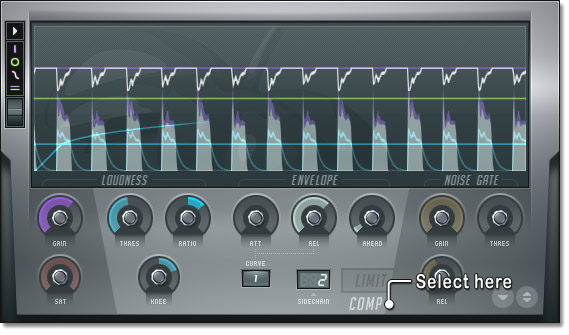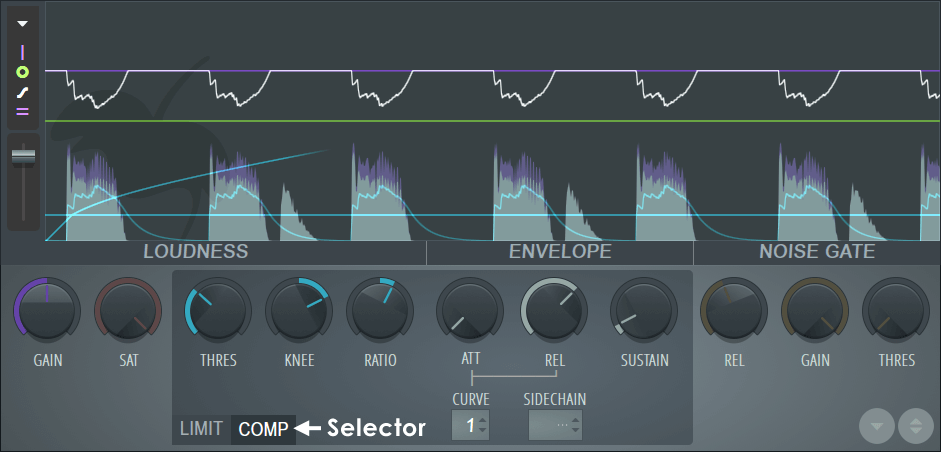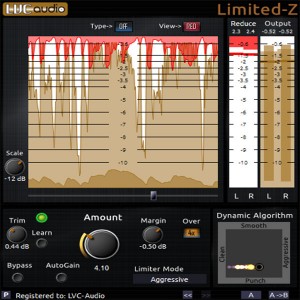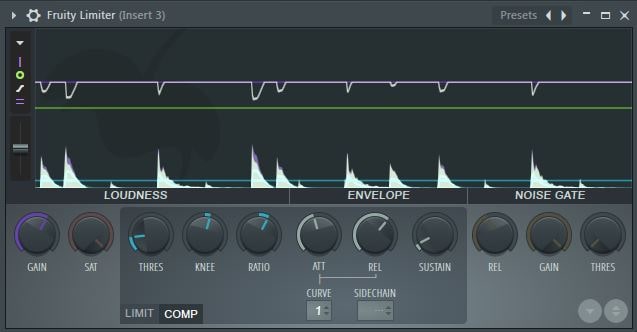Article Content
As I cover in my new course Mastering in the Box, there are some incredible plugins available for anyone interested in computer-based mastering. Although nothing can replace an experienced engineer, working in an expertly designed room, on high-end equipment, there are some fantastic free tools available online that will aid engineers working on projects with limited budgets.
Here are some completely free plugins that you can work into your in the box mastering workflow …
Index of audio plugins from Image Line. Browse plugins, then preiew and pull projects created with them directly from Blend. W1 Limiter is a vst instruments plugins developed by George Yohng, a free Limiter VST plugins that you can use on any VST Compatible hosts such as Steinberg Cubase, Nuendo, Wavelab, FL Studio/Fruityloops, Ableton Live, Adobe Audition, LMMS, Reaper, SONAR, Mixcraft, Acid Pro, etc.

1. Voxengo SPAN
As I cover in the course, Metering is absolutely essential to mastering, and SPAN is a versatile and free utility plugin.
It provides spectral analysis, correlation metering and clipping detection, as well as displaying RMS and max crest factor. The interface is simple, clear, and even somewhat customizable. It's a truly deep, accurate and useful metering plugin, which is refreshing considering that it's free. It's also compatible with virtually every DAW.
2. LoudMax by Thomas Mundt
Described as 'a look-ahead brickwall loudness maximizer plugin with a clean transparent sound, designed to retain the original character of the music as much as possible even at high compression levels,' LoudMax is a wonderfully simply tool. It has two sliders: threshold and output — and that's all it needs.
If you're interested in learning how a limiter works and affects your material, LoudMax boils the concept down to its most basic elements, all while providing a mostly transparent sound.
3. Limiter №6 by Vladg Sound
This is a more complex and versatile take on limiting. It offers more control than LoudMax, which can be helpful if your program material requires detailed tweaking.
Its five modules include: RMS compressor, peak limiter, high-frequency limiter, clipper, and true peak limiter.
Each of these modules have extremely flexible controls. There are some expensive and well-known limiter plugins that don't come with features like mid-side processing, oversampling and true peak detection. The fact that these features come included with Limiter №6 makes it even more special.
4. mvMeter from TBProAudio
I'm still pretty shocked that this plugin is free. It looks great, it's easy to use, and it's deeper than some metering tools that cost hundreds of dollars more. It allows you to measure PEAK, RMS, EBU R128, VU and PPM. Additionally, it has multi-channel metering so you can see what's happening on the stereo, left, right, mid, or side channels.
The five different themes allow the user to change the look to various classic VU and PPM Meters, which is a nice touch. (It doesn't improve the sound quality — I prefer the sleek look of the retro skin.)
5. Stereo Tool v3 by Flux
Some mixes require a bit of balancing the information spread between the channels, and Stereo Tool v3 is prefect for this application. It includes panning controls for the left and right channels, a vector scope display, global stereo width and pan controls, PPM Input and Output meters, a phase correlation meter, and a variety of other useful features.
If the content you've been delivered has balance and phase issues, this is an excellent free plugin.
6. Voxengo Marvel GEQ
Being able to sculpt your signal using an equalizer is essential for a mastering engineer. This linear-phase 16-band graphic equalizer is impressive in both functionality and sound.
I'm not sure why every plugin doesn't have an 'undo/redo' function, because after using this equalizer, I find it to be quite helpful. Being able to work in mid-side mode allows the user to treat information in the center separately from the sides, which, when used properly, can result in a much clearer stereo spread, and a more defined space amongst individual elements.
As with each of the great tools on this list, it's surprising that such a useful tool is free.
I generally believe that in audio, you get what you pay for, but each of the aforementioned plugins are exceptions to this rule.
Mastering in the Box Course
If you're interested in expanding your knowledge and learning effective techniques for getting great sounding masters 100% in the box, check out my debut course: Mastering in the Box
Mastering in the Box with Ian Vargo

As I cover in my new course Mastering in the Box, there are some incredible plugins available for anyone interested in computer-based mastering. Although nothing can replace an experienced engineer, working in an expertly designed room, on high-end equipment, there are some fantastic free tools avai
FREE Masterclass: Low-End Mixing Secrets
Downloaded Over 19,455 times!
Discover how to make your kick and bass hit hard by cutting (NOT boosting) the right frequencies! Plus, more counterintuitive ways to get fuller yet controlled low-end in your mix. Download this 40-minute workshop by Matthew Weiss, now for FREE!

In this tutorial I will show you how to sidechain in FL Studio. There are a couple ways to sidechain your sounds, in this tutorial I will use a method using only 1 plugin: Fruity Limiter. This plugin comes with every version of FL Studio. So it should be available for every Fruity user.
Note: This tutorial is made for FL Studio 12, but still applies to FL Studio 20.
What is sidechaining?
First of all, for those who don't know; here's a short explanation of what sidechaining is. With sidechaining you let a track (sound) influence another track.
[pullquote]When you link track A to track B, then track A will dip in volume to the amount you set the sidechain to every time track B is active.[/pullquote]

A lot of EDM producers use it on their leads to make it 'bounce' or to give the kick a bit of room. The best and easiest way to explain is with the two examples below.
This first example has no sidechain applied at all:
http://typhonicsamples.com/wp-content/uploads/2017/01/Example-1-no-sidechain.wavThis second example has a sidechain applied to the synth track (As you notice, every time the kick hits, the lead dips):
Sidechain Fruity Limiter
http://typhonicsamples.com/wp-content/uploads/2017/01/Example-2-light-sidechain.wavSidechaining can be used for a lot more than only a kick to a synth lead. However, this tutorial focusses on how to sidechain. So, let's start!
1. Set up your tracks.
Make sure each sound has its own mixer track assigned. See image, where the kick is red and the synth is green.
Assign Mixer Channel: Kick = Red – Synth = Green
2. Link your tracks.

1. Voxengo SPAN
As I cover in the course, Metering is absolutely essential to mastering, and SPAN is a versatile and free utility plugin.
It provides spectral analysis, correlation metering and clipping detection, as well as displaying RMS and max crest factor. The interface is simple, clear, and even somewhat customizable. It's a truly deep, accurate and useful metering plugin, which is refreshing considering that it's free. It's also compatible with virtually every DAW.
2. LoudMax by Thomas Mundt
Described as 'a look-ahead brickwall loudness maximizer plugin with a clean transparent sound, designed to retain the original character of the music as much as possible even at high compression levels,' LoudMax is a wonderfully simply tool. It has two sliders: threshold and output — and that's all it needs.
If you're interested in learning how a limiter works and affects your material, LoudMax boils the concept down to its most basic elements, all while providing a mostly transparent sound.
3. Limiter №6 by Vladg Sound
This is a more complex and versatile take on limiting. It offers more control than LoudMax, which can be helpful if your program material requires detailed tweaking.
Its five modules include: RMS compressor, peak limiter, high-frequency limiter, clipper, and true peak limiter.
Each of these modules have extremely flexible controls. There are some expensive and well-known limiter plugins that don't come with features like mid-side processing, oversampling and true peak detection. The fact that these features come included with Limiter №6 makes it even more special.
4. mvMeter from TBProAudio
I'm still pretty shocked that this plugin is free. It looks great, it's easy to use, and it's deeper than some metering tools that cost hundreds of dollars more. It allows you to measure PEAK, RMS, EBU R128, VU and PPM. Additionally, it has multi-channel metering so you can see what's happening on the stereo, left, right, mid, or side channels.
The five different themes allow the user to change the look to various classic VU and PPM Meters, which is a nice touch. (It doesn't improve the sound quality — I prefer the sleek look of the retro skin.)
5. Stereo Tool v3 by Flux
Some mixes require a bit of balancing the information spread between the channels, and Stereo Tool v3 is prefect for this application. It includes panning controls for the left and right channels, a vector scope display, global stereo width and pan controls, PPM Input and Output meters, a phase correlation meter, and a variety of other useful features.
If the content you've been delivered has balance and phase issues, this is an excellent free plugin.
6. Voxengo Marvel GEQ
Being able to sculpt your signal using an equalizer is essential for a mastering engineer. This linear-phase 16-band graphic equalizer is impressive in both functionality and sound.
I'm not sure why every plugin doesn't have an 'undo/redo' function, because after using this equalizer, I find it to be quite helpful. Being able to work in mid-side mode allows the user to treat information in the center separately from the sides, which, when used properly, can result in a much clearer stereo spread, and a more defined space amongst individual elements.
As with each of the great tools on this list, it's surprising that such a useful tool is free.
I generally believe that in audio, you get what you pay for, but each of the aforementioned plugins are exceptions to this rule.
Mastering in the Box Course
If you're interested in expanding your knowledge and learning effective techniques for getting great sounding masters 100% in the box, check out my debut course: Mastering in the Box
Mastering in the Box with Ian VargoAs I cover in my new course Mastering in the Box, there are some incredible plugins available for anyone interested in computer-based mastering. Although nothing can replace an experienced engineer, working in an expertly designed room, on high-end equipment, there are some fantastic free tools avai
FREE Masterclass: Low-End Mixing Secrets
Downloaded Over 19,455 times!
Discover how to make your kick and bass hit hard by cutting (NOT boosting) the right frequencies! Plus, more counterintuitive ways to get fuller yet controlled low-end in your mix. Download this 40-minute workshop by Matthew Weiss, now for FREE!
In this tutorial I will show you how to sidechain in FL Studio. There are a couple ways to sidechain your sounds, in this tutorial I will use a method using only 1 plugin: Fruity Limiter. This plugin comes with every version of FL Studio. So it should be available for every Fruity user.
Note: This tutorial is made for FL Studio 12, but still applies to FL Studio 20.
What is sidechaining?
First of all, for those who don't know; here's a short explanation of what sidechaining is. With sidechaining you let a track (sound) influence another track.
[pullquote]When you link track A to track B, then track A will dip in volume to the amount you set the sidechain to every time track B is active.[/pullquote]
A lot of EDM producers use it on their leads to make it 'bounce' or to give the kick a bit of room. The best and easiest way to explain is with the two examples below.
This first example has no sidechain applied at all:
http://typhonicsamples.com/wp-content/uploads/2017/01/Example-1-no-sidechain.wavThis second example has a sidechain applied to the synth track (As you notice, every time the kick hits, the lead dips):
Sidechain Fruity Limiter
http://typhonicsamples.com/wp-content/uploads/2017/01/Example-2-light-sidechain.wavSidechaining can be used for a lot more than only a kick to a synth lead. However, this tutorial focusses on how to sidechain. So, let's start!
1. Set up your tracks.
Make sure each sound has its own mixer track assigned. See image, where the kick is red and the synth is green.
Assign Mixer Channel: Kick = Red – Synth = Green
2. Link your tracks.
Now click on your kick (red) in your mixer to highlight it. This will be the sound that influences the other track. Then right click on the little upwards arrow of the sound that you want to link the kick to, in this example the synth (green). Choose 'Sidechain to this track'.
Note: If you want to cancel a sidechain, or you've clicked on the wrong track, simply select your kick track and then hit the little green arrow of the synth track. Now the link is canceled.
In the comments below Chandler asked how to use a sidechain, but mute the kick. Follow these steps to achieve that:
1. Select the mixer channel (track) where your kick is assigned to. In my example the red channel.
Fallout 4 better night vision. 2. If you take a look at the image above, you can see that below the master channel there's a green knob (bottom left of the image). Turn it down. This will mute your kick, but it will keep the sidechain.
3. Add Fruity Limiter.
Add the Fruity Limiter plugin to the track where you want to apply the sidechain to. In this example the synth track.
4. Settings for Fruity Limiter.
First of all set the limiter to Comp and then the sidechain to 1. After that you set your Ratio knob almost entirely to the right.
Now you can add the amount of sidechain with the Thres knob. When you play your song (or just the two sounds together), you can see how much the kick is making the synth dip.
Play around with the Threshold and Ratio settings to get an understanding of how it works and what amount works best for your track.
Fruity Limiter Settings for Sidechain
Fruity Limiter Plugin Download
So this is how you sidechain a synth with a kick. However, like I said, there are more ways to achieve the same results and there are countless possibilities with sidechaining. This is just the most common way to use it. If you have any questions, please feel free to drop a comment below or contact us directly!
Fruity Limiter Dll
Looking for some samples to use in FL Studio? Check out our Premium Sample Packs (only 1 dollar each) or our Free Downloads page!
